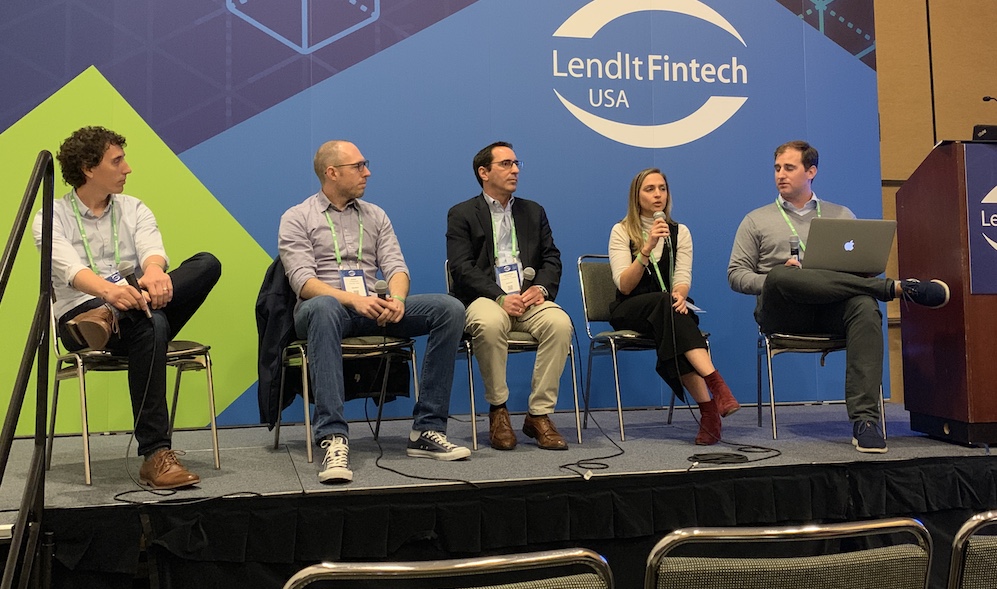While the mortgage industry grows to be more technologically driven and more connected, does it make sense for homeowners to keep sharing their bank account information even after their mortgage is originated?
Experts on the panel, hosted by HousingWire CEO Clayton Collins, discussed the merits of sharing data and how it can increase efficiency during the mortgage lifecycle, from origination to servicing to refinancing, during a recent panel discussion during the Lendit Fintech Conference in San Francisco.
Kate Adamson, head of mortgage at Plaid, a company that enables consumers to link their bank accounts to lenders and servicers, explained that the way to solve the digital mortgage isn’t by creating a great front-end experience, but by creating multiple efficiencies in the process.
“You don’t solve the digital mortgage by having a better digital front end experience. You need to solve any lending experience and create efficiencies throughout the loan processing and underwriting process by creating an integrated digital-first approach.”
“That’s a Band-Aid,” she added.
Adamson added that Plaid has seen some customers or lenders that have mixed results with using tools to gather banking data.
“The reality is that you need to be able to process that information and be able to pass it to the person that needs to review it and get it in their hands in a timely manner and communicate back to the consumer,” she said.
Adamson explained there is value in repurposing the information and data from the consumer for different use cases, whether it is used at the start of the loan or during servicing or beyond.
“The reality is that you need to be able to communicate that back and forth and create those workflows, build the logic and incorporate it fully, repurpose the data for different use cases, substitute that data in for something else that you might have been pulling in elsewhere.”
“That’s even where I’ve seen it with incremental savings,” added Jonathan Principi, senior director of business development at Envestnet | Yodlee. “Because when you autocopy an intelligent application, you provide credentials and you pull the data in and start to intelligently build the application. So now you’re starting to save time there, the processor doesn’t have to be hunting down [asset documentation].”
Adamson added that data isn’t an off-the-shelf product.
“it’s something that requires investment and logic and thoughtfulness about how its utilized, plugged in and taken advantage of. That’s how you unleash the power. You can’t just buy the data and see the results,” she said.
Allan Carroll, CTO and founder of LoanSnap chimed in and said that “You get this valuable piece of data from the customer and then you use it for one specific thing and then you throw away the rest. And one thing that we’ve found really valuable is really thinking about every last piece of data you’ve got from them. They had to either go into the back of their closet for that paper or they had to enter their bank credentials. That’s hard earned data. How can you squeeze every bit you can out of it?”
“I think about income and that bank statement, that’s one thing. But you can see a lot of data from that connection,” he added, explaining that a lender can track employment, unemployment and any possible risk by seeing bank account activity.
One limitation those in the post-origination process might find is getting the borrower on board with maintaining the connection to account data.
“The caveat to all of this is that we talk big game of the potential post-origination, that you’ll collect all their data and keep giving them advice,” Adamson said, adding that ”That’s not how it works in practice. The reality is that you need consumer buy-in to be able to get this to happen. You need to be able to illustrate to the consumer that there’s value in this for them.”





